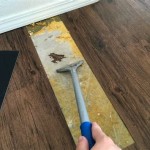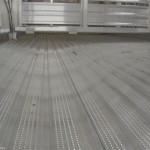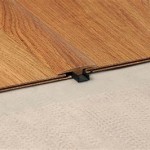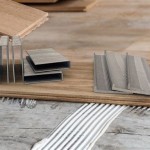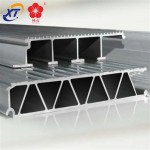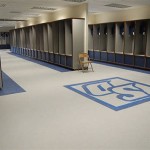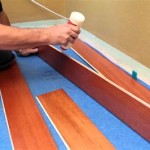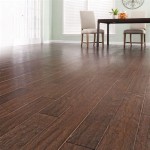14 Aluminum Boat Floor Plans: A Guide to Design and Layout
Aluminum boats are renowned for their durability, lightweight construction, and versatility, making them a popular choice for various water activities, including fishing, recreation, and even commercial applications. A well-designed floor plan is crucial for optimizing the functionality and usability of an aluminum boat. This article explores 14 different aluminum boat floor plans, highlighting their key features, advantages, and suitability for specific purposes.
The selection of the appropriate floor plan hinges on several factors, notably the intended use of the boat, the number of occupants, and the desired level of comfort and convenience. Understanding the nuances of each design allows boat owners to make informed decisions that directly impact their boating experience.
1. The Simple Open Layout
This is perhaps the most basic and adaptable of all aluminum boat floor plans. It typically involves a completely open deck space, maximizing room for movement and storage. There are usually bench seats along the sides or at the stern. This plan is ideal for fishing, utility purposes, or transporting cargo due to its unobstructed area.
Advantages of the open layout include ease of cleaning, flexibility in configuring seating arrangements, and affordability due to its simplicity. Its primary disadvantage is the lack of protection from the elements and limited storage compartments.
2. The Center Console
The center console design places the helm station in the middle of the boat, providing 360-degree walk-around access. This configuration is favored by anglers as it facilitates easy movement while fighting fish. It also offers better visibility for the captain and improved weight distribution.
Center console boats often feature storage compartments beneath the console and in the bow. They are available in a wide range of sizes, suitable for both inshore and offshore fishing. A drawback can be the reduced deck space compared to boats with side consoles.
3. The Side Console
In the side console configuration, the helm station is positioned along one side of the boat. This layout frees up space for seating or storage on the opposite side. It is a popular choice for smaller aluminum fishing boats and recreational boats.
Side console designs offer a good balance of functionality and space efficiency. They are often more affordable than center console models. However, they may not provide the same level of walk-around access or balanced weight distribution as a center console boat.
4. The Bowrider
Bowrider boats feature a seating area in the bow, creating a comfortable space for passengers to relax and enjoy the ride. This design is well-suited for recreational boating, family outings, and watersports. Aluminum bowriders are known for their stability and ease of handling.
Bowrider floor plans typically include a windshield to protect passengers from wind and spray. They may also feature built-in storage compartments and beverage holders. While offering comfortable seating, the bowrider design may sacrifice some fishing space compared to other layouts.
5. The Cuddy Cabin
Cuddy cabin boats have a small enclosed cabin in the bow, offering shelter from the elements and a place to rest or store gear. This configuration is ideal for overnight trips and extended fishing expeditions. Aluminum cuddy cabins provide a durable and weatherproof solution for boaters seeking comfort and protection.
The cuddy cabin may include a small berth, a toilet, and storage compartments. The deck space is typically reduced compared to open layouts, but the added comfort and functionality make it a worthwhile trade-off for many boaters. They are heavier than open boats of the same length, but offer better protection from the elements.
6. The Jon Boat
Jon boats are characterized by their flat-bottomed, rectangular hull design. They are primarily used for fishing in shallow waters, such as rivers, lakes, and swamps. Their simplicity and affordability make them a popular choice for budget-conscious boaters.
The floor plan of a jon boat is typically very basic, with a simple open deck. Some models may include bench seats or a raised casting platform. While they are not designed for rough water, jon boats are extremely stable in calm conditions.
7. The Modified V Hull
A modified V hull strikes a balance between the stability of a flat-bottomed boat and the smooth ride of a deep-V hull. This design is suitable for a wider range of water conditions, making it a versatile choice for fishing and recreation. The floor plan can be customized to suit various purposes.
Modified V hull aluminum boats may feature a center console, side console, or open layout. They generally provide a more comfortable ride than flat-bottomed boats, especially in choppy water. They are also more fuel-efficient than deep-V hull boats.
8. The Deep-V Hull
Deep-V hull boats are designed to cut through waves, providing a smooth and stable ride in rough offshore conditions. This design is favored by anglers targeting larger fish in open water. Aluminum deep-V hulls offer the strength and durability needed to withstand harsh marine environments.
Deep-V hull boats typically have a higher freeboard than other hull designs, providing added protection from spray. The floor plan can vary, but center console and walk-around layouts are common. They require more horsepower than other types of hull, making them more expensive to operate.
9. The Pontoon Boat
Pontoon boats are characterized by their large, flat deck supported by two or three aluminum pontoons. They offer exceptional stability and a large amount of deck space, making them ideal for entertaining and relaxing on the water. Aluminum pontoon boats are known for their durability and low maintenance requirements.
The floor plan of a pontoon boat can be highly customizable, with options for seating, tables, grills, and even onboard restrooms. They are popular for family outings, parties, and leisurely cruises. They are not generally suited for high-speed boating or rough water conditions.
10. The Walk-Around Cabin
Walk-around cabin boats feature a cabin that extends to the bow, with walkways on either side allowing access to the foredeck. The design combines the comfort of a cabin with the functionality of a fishing boat. Aluminum walk-arounds offer a durable and seaworthy option for serious anglers and cruisers.
These boats often include features such as a galley, a head, and sleeping accommodations. They are suitable for extended trips and overnight stays. The walk-around design provides easy access to the bow for anchoring and fishing. They offer less interior space than a cuddy cabin of the same length.
11. The Tiller Steer
Tiller steer boats are controlled by a tiller handle attached directly to the outboard motor. This simple and direct steering system is common in smaller fishing boats and utility boats. Aluminum tiller steer boats offer a lightweight and affordable option for boaters who prioritize simplicity and maneuverability.
The floor plan of a tiller steer boat is typically very basic, with an open deck and minimal features. The operator sits at the stern, directly controlling the engine. This configuration allows for precise control in tight spaces. It is not suitable for larger boats or high-speed operation.
12. The Bass Boat
Bass boats are specifically designed for bass fishing, featuring a low profile and a wide beam for stability. They are equipped with features such as livewells, rod lockers, and casting platforms. Aluminum bass boats offer a durable and affordable alternative to fiberglass models.
The floor plan of a bass boat is optimized for fishing, with comfortable seating and easy access to all parts of the boat. They are typically powered by high-horsepower outboard motors. They are not typically used for other activities such as water sports, unless modified. The low freeboard makes these boats less suitable for choppy water.
13. The Jet Boat
Jet boats are powered by a jet pump instead of a propeller. This propulsion system allows them to operate in shallow water without damaging the engine. Aluminum jet boats are popular for river running and navigating rocky streams.
The floor plan of a jet boat is similar to that of a standard outboard boat, but the engine is located inside the hull. They typically have a shallow draft, allowing them to navigate in very shallow water. They can be less efficient than propeller-driven boats at higher speeds.
14. The Inflatable Boat with Aluminum Floor
Inflatable boats with aluminum floors offer a portable and versatile option for boating. The aluminum floor provides a rigid and stable platform, while the inflatable tubes offer excellent buoyancy. These boats are easy to transport and store, making them ideal for recreational boating and fishing.
The floor plan is usually configurable, allowing users to add seats, storage compartments, and other accessories. They are typically smaller and lighter compared to other types of aluminum boats. They are ideal for calm waters and near-shore use.
Key Considerations When Choosing an Aluminum Boat Floor Plan
Several key factors influence the selection of the optimal aluminum boat floor plan. These include intended use, capacity, budget, storage needs, and desired level of comfort. Careful consideration of these factors will ensure boaters choose a layout that best suits their individual needs.
The primary use of the boat significantly impacts the floor plan choice. A serious angler may prioritize a center console or walk-around layout, while a family seeking recreational fun may prefer a bowrider or pontoon boat. Boat capacity should also be considered, ensuring the floor plan can comfortably accommodate the intended number of occupants.
Advantages and Disadvantages of Different Floor Plans
Each aluminum boat floor plan presents distinct advantages and disadvantages. Open layouts offer maximum flexibility and affordability, but lack protection from the elements. Center consoles provide excellent walk-around access, but may sacrifice deck space. Bowriders offer comfortable seating but may limit fishing space. Understanding these trade-offs is crucial for making an informed decision. Cuddy cabins offer weather protection and a place to stay, but they may sacrifice more deck space.
Budgetary constraints often play a significant role in the selection process. Simpler floor plans, such as open layouts and tiller steer boats, are generally more affordable than more complex designs, such as walk-arounds and cuddy cabins.
Customization Options For Aluminum Boat Floor Plans
Many aluminum boat manufacturers offer customization options for their floor plans, allowing boaters to tailor the layout to their specific needs. These may include adding seating, storage compartments, livewells, or other accessories. Customization can significantly enhance the functionality and usability of an aluminum boat.
Boaters should carefully consider their long-term needs and preferences when choosing customization options. It is often more cost-effective to add desired features during the initial purchase than to retrofit them later. Consulting with a knowledgeable boat dealer or builder can help guide the customization process.

Diy Casting Deck With Seat 14ft Aluminum Boat Project
Redesigning My 14 Aluminum V Hull Bass Boats Canoes Kayaks And More Fishing Forums

16 John Boat Floor Installation Page 1 Iboats Boating Forums 319004 Boats Jon Aluminum

14ft Semi V Boat Project

Alumacraft 14ft Boat Conversion
14 Boat Floor General Discussion Forum In Depth Outdoors

14 Boat Floor General Discussion Forum In Depth Outdoors
Aluminium Fishing Boat Plans Design Net
First Timer Decking For 14 Deep V Hull Boat Design Net

Redesigning My 14 Aluminum V Hull Bass Boats Canoes Kayaks And More Fishing Forums
Related Posts

